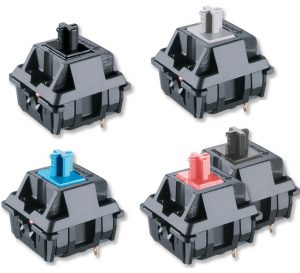Just How a Membrane Switch Improves User Experience and Device Efficiency
Just How a Membrane Switch Improves User Experience and Device Efficiency
Blog Article
Recognizing the Performance of Membrane Layer Switches for Interface Devices
The performance of membrane switches represents a significant innovation in interface layout, incorporating efficiency with visual adaptability. These switches operate via a multi-layered framework that converts customer interactions right into electrical signals, permitting both small designs and durability versus environmental elements. As industries significantly focus on customer experience, recognizing the nuances of membrane layer button technology becomes important. What ramifications do these developments hold for future applications, and exactly how might they redefine individual interactions throughout different tools?
What Are Membrane Switches?
Membrane buttons are cutting-edge user interface tools that assist in customer communication with digital devices. These versatile components include several layers, consisting of a visuals overlay, spacer, and a published circuit layer. The style permits for a smooth integration into numerous electronic tools, boosting both the visual and useful facets of interface.
Membrane layer buttons are generally utilized in a wide variety of applications, from family devices to commercial machinery and clinical gadgets. Their construction generally includes a slim profile, making them an optimal selection for compact layouts. The tactile comments offered by these switches can be engineered to satisfy specific individual choices, making sure efficient interaction between the customer and the tool.
Sturdiness is another significant benefit of membrane buttons, as they are resistant to dirt, dampness, and chemicals, which boosts their life-span sought after settings. In addition, these switches can be personalized in regards to form, size, and visuals style, enabling branding and user-specific features. Generally, membrane layer switches over stand for a useful remedy for enhancing individual experience in electronic gadgets, incorporating capability with visual charm in an efficient manner.
Exactly How Membrane Layer Changes Work
Operating on a simple concept, membrane switches use a split construction to sign up individual input successfully. Each switch contains numerous layers, consisting of a published circuit layer, a spacer layer, and a leading graphic layer, which are made to interact effortlessly. When a user presses the leading layer, it presses the spacer layer, bringing the conductive aspects of the circuit layer right into contact with each other.
This contact produces a shut circuit, indicating the gadget to execute a particular feature. The style allows for numerous setups, including responsive feedback, which can enhance the user experience by supplying a physical experience upon activation. The products used in membrane switches commonly consist of adaptable substrates, such as polyester or polycarbonate, which make sure sturdiness and durability versus wear and tear.

Key Benefits of Membrane Layer Buttons

One more considerable benefit is their density. Membrane switches are slim and light-weight, which allows manufacturers to save room in their tools without giving up performance. This function my website is particularly advantageous in applications where weight and quantity are critical considerations.
Furthermore, membrane switches are resistant to dirt, dampness, and chemicals, improving their wikipedia reference longevity. This durability expands their life-span and decreases the demand for regular replacements, resulting in price financial savings in time.
Moreover, the responsive feedback given by membrane switches can be optimized to boost customer communication. They can include features such as elevated buttons or audible clicks, improving use and user experience.
Applications Throughout Industries
Interface gadgets making use of membrane buttons prevail in a vast variety of sectors, showcasing their versatility and functionality. Membrane Switch. In the medical industry, membrane layer switches are important to devices such as diagnostic tools and individual tracking systems, where their longevity and convenience of cleansing are essential for maintaining health standards. Likewise, in the automotive industry, these switches are employed in dashboard controls and infotainment systems, supplying a sleek and modern-day user interface for users.
Furthermore, the consumer electronic devices sector take advantage of membrane buttons in home appliances and handheld devices, where portable layout and straightforward interfaces boost user experience. Industrial applications additionally take advantage of membrane layer switches for control panels in machinery and automation systems, emphasizing their effectiveness and resistance to extreme settings.
In the aerospace and defense markets, membrane layer switches are utilized in cabin controls and devices, where dependability and performance under extreme problems are critical. In addition, the gaming sector increasingly includes membrane switches in controllers and arcade makers, adding to an engaging customer her response experience. Generally, the flexibility of membrane switches enables their widespread use throughout numerous industries, emphasizing their importance in modern interface design.
Future Fads in Membrane Layer Switch Over Technology

Furthermore, making use of advanced products, such as polycarbonate and polyester films, is expected to climb, giving boosted resilience and resistance to ecological stress factors. These materials add to the total long life of membrane layer switches, making them appropriate for harsher commercial applications.
Moreover, the incorporation of clever innovation, including IoT connectivity, will enable membrane layer buttons to interact with other tools and systems, facilitating a more interactive user experience. This trend aligns with the growing need for smart gadgets throughout various industries, from healthcare to consumer electronic devices.
Lastly, personalization options are expected to broaden, allowing suppliers to produce bespoke solutions tailored to particular customer needs and choices. These growths will certainly place membrane layer switches as vital elements in the development of interface innovation.
Conclusion
Finally, membrane layer switches over represent a pivotal development in user interface innovation, providing a trustworthy and versatile remedy for diverse digital applications. Their split construction helps with portable design, while features such as responsive comments improve customer communication. The resilience against environmental elements further strengthens their energy throughout several industries. As improvements in material scientific research and touch noticing technologies proceed, the functionality and applicability of membrane layer switches are expected to broaden, enhancing their significance in contemporary electronic tools.
Report this page